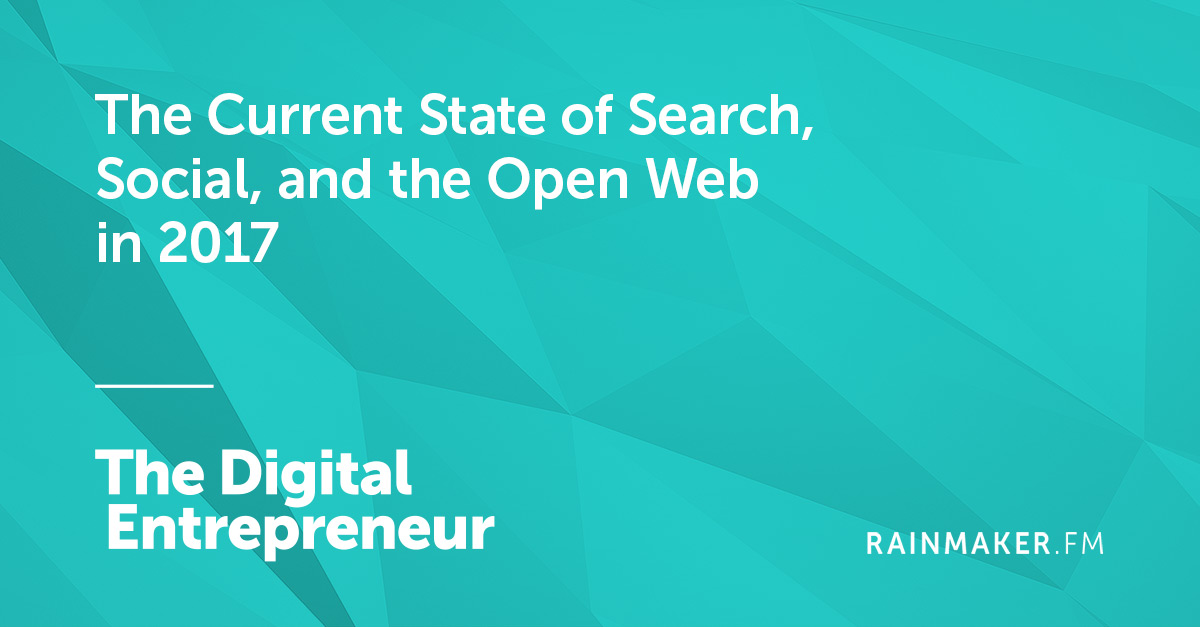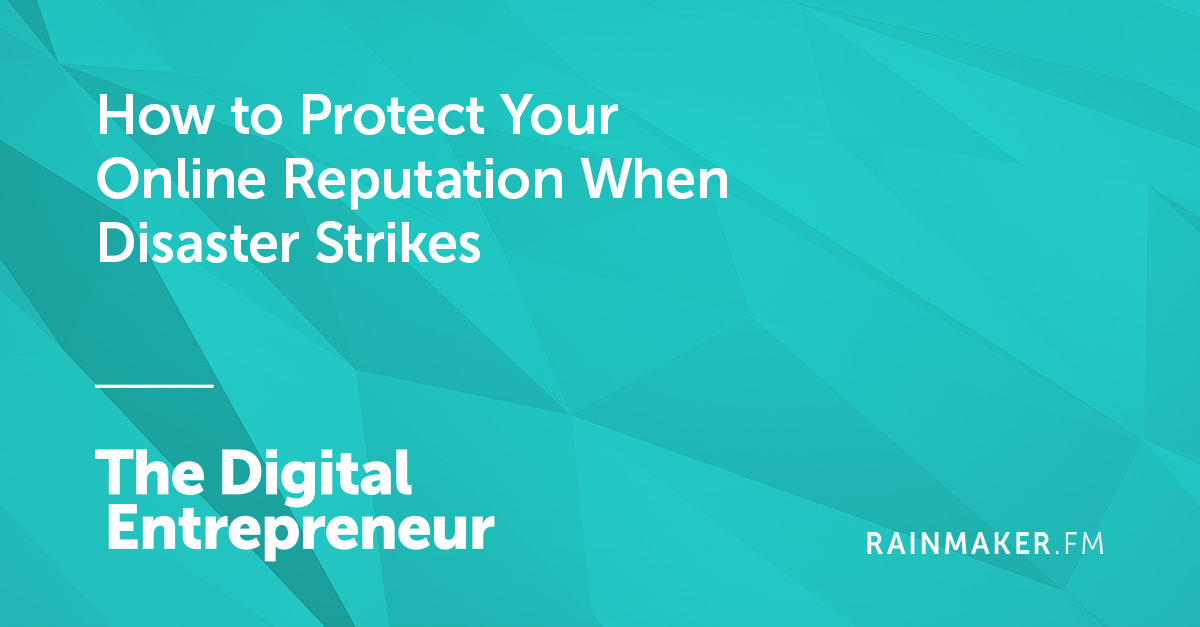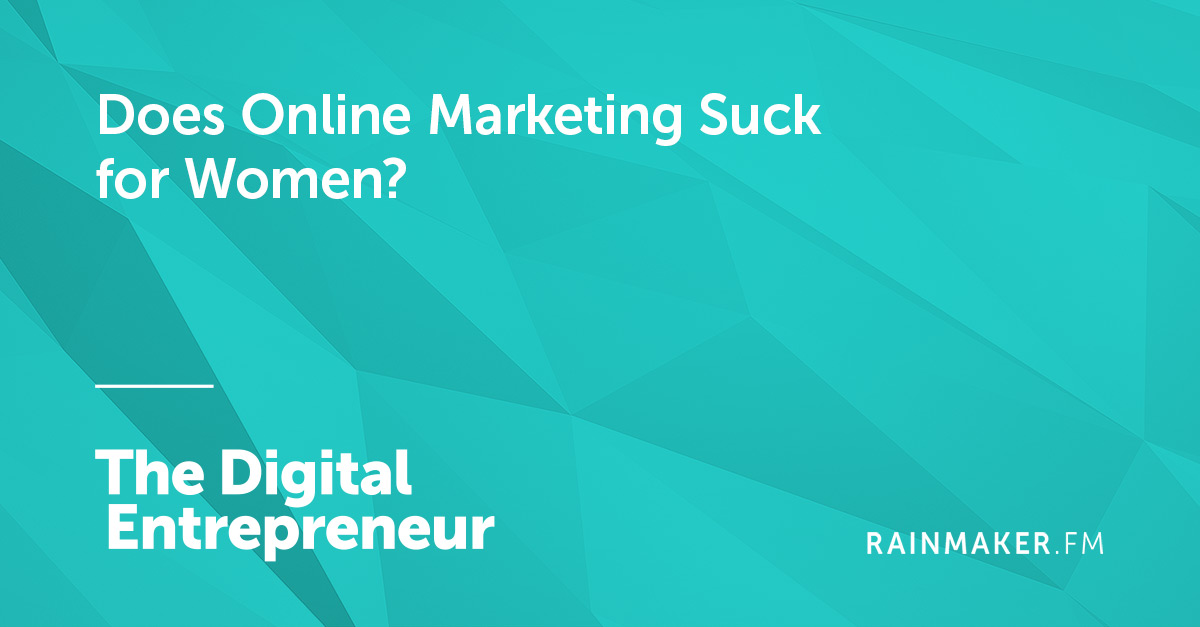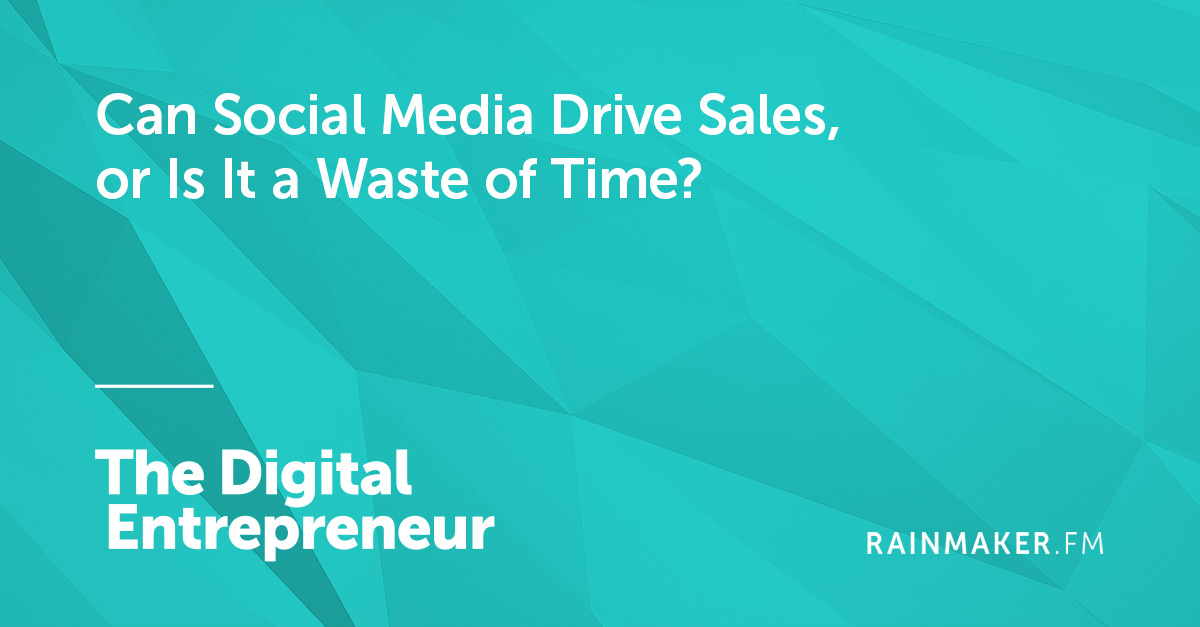
An in-depth discussion on the intersection of search, social, and the open web, and how you can prepare for the future.
Search and social marketing are a cornerstone of online marketing. But as the open web changes with the growth of Google, Facebook and Amazon, how should online marketers react?
In this 34 minute episode, Sean Jackson and Katy Katz interview Rob Garner, the author of Search & Social, to discuss the future of search, social and the open web.
Listen to The Digital Entrepreneur below …
Important links from this episode:
- Learn more about Rob Garner on LinkedIn
- Connect with Katy Katz on Twitter
- Connect with Sean on Twitter


